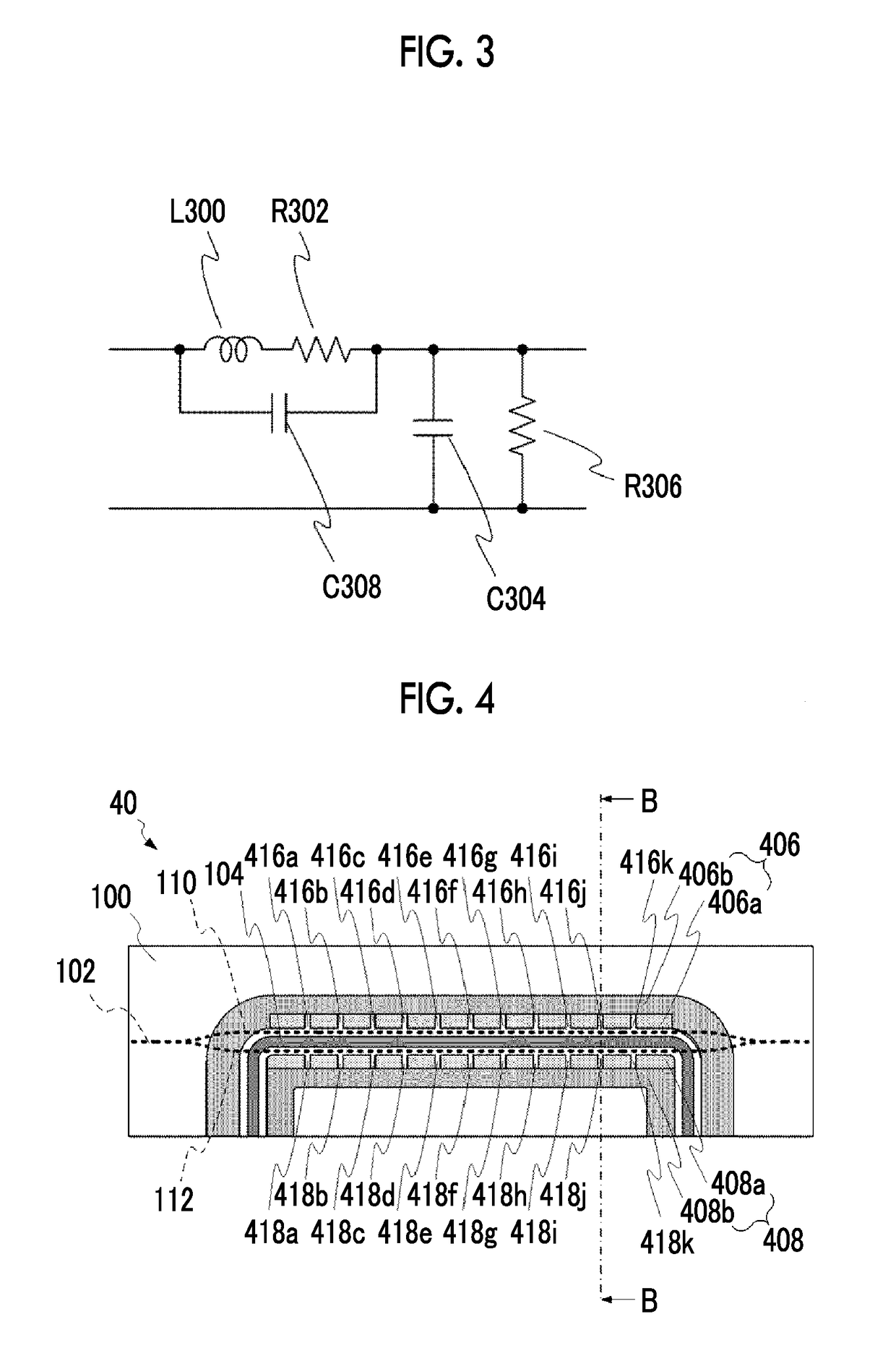Waveguide-type optical element
- Summary
- Abstract
- Description
- Claims
- Application Information
AI Technical Summary
Benefits of technology
Problems solved by technology
Method used
Image
Examples
first embodiment
[0044]First, a first embodiment of the present invention will be described.
[0045]FIG. 1 is a view illustrating the constitution of a waveguide-type optical element according to the first embodiment of the present invention.
[0046]The present waveguide-type optical element 10 is a Mach-Zehnder-type optical modulator and has a Mach-Zehnder (MZ)-type optical waveguide 102 formed on a substrate 100 and a central electrode 104 and two ground electrodes 106 and 108 which constitute a CPW-type electrode.
[0047]The substrate 100 is a substrate made of lithium niobate (LN) which is an electro-optic material and is, for example, an X-cut LN substrate. The MZ-type optical waveguide 102 has parallel waveguides 110 and 112, and the central electrode 104 is formed parallel to the parallel waveguides 110 and 112 in a region on the surface of the substrate 100 which is surrounded by the parallel waveguides 110 and 112. In addition, the ground electrodes 106 and 108 are formed respectively at position...
second embodiment
[0055]Next, a second embodiment of the present invention will be described.
[0056]FIG. 4 is a view illustrating the constitution of a waveguide-type optical element according to the second embodiment of the present invention. Meanwhile, in FIGS. 4 and 5, the same constituent elements as those in the waveguide-type optical element 10 according to the first embodiment illustrated in FIGS. 1 and 2 will be given the same reference number as in FIGS. 1 and 2, and the description thereof in the above-described waveguide-type optical element 10 according to the first embodiment will be applied to the present embodiment.
[0057]The present waveguide-type optical element 40 has the same constitution as that of the waveguide-type optical element 10 according to the first embodiment, but includes ground electrodes 406 and 408 instead of the ground electrodes 106 and 108. The ground electrodes 406 and 408 have the same constitution as that of the ground electrodes 106 and 108 except for the fact t...
third embodiment
[0062]Next, a third embodiment of the present invention will be described.
[0063]FIG. 6 is a view illustrating the constitution of a waveguide-type optical element according to the third embodiment of the present invention. Meanwhile, in FIGS. 6 and 7, the same constituent elements as those in the waveguide-type optical element 10 according to the first embodiment illustrated in FIGS. 1 and 2 will be given the same reference number as in FIGS. 1 and 2, and the description thereof in the above-described waveguide-type optical element 10 according to the first embodiment will be applied to the present embodiment.
[0064]The present waveguide-type optical element 60 has the same constitution as that of the waveguide-type optical element 10 according to the first embodiment, but includes ground electrodes 606 and 608 instead of the ground electrodes 106 and 108. The ground electrodes 606 and 608 have the same constitution as that of the ground electrodes 106 and 108. However, a difference ...
PUM
 Login to view more
Login to view more Abstract
Description
Claims
Application Information
 Login to view more
Login to view more - R&D Engineer
- R&D Manager
- IP Professional
- Industry Leading Data Capabilities
- Powerful AI technology
- Patent DNA Extraction
Browse by: Latest US Patents, China's latest patents, Technical Efficacy Thesaurus, Application Domain, Technology Topic.
© 2024 PatSnap. All rights reserved.Legal|Privacy policy|Modern Slavery Act Transparency Statement|Sitemap



